Do-it-yourself splitter - drawings, diagrams, sizes. 120 photos of homemade wood splitters
Residents of Russian villages, deprived of the usual amenities for citizens? they do not have the opportunity to take advantage of central heating, so they are forced to heat their homes with the help of traditional Russian wood-burning stoves.
Because they are called firewood, they are called firewood because they are essentially wood products. That is, in order for them to be able to “feed” the stove, long logs must first be cut into chocks, after which the chocks are chopped into logs.
Wood splitter evolution
The most time-consuming of these processes is splitting chocks into logs. The only tool that allows chopping wood is a wood splitter. From ancient times in Russia, a woodcutter was a young man who independently chopped wood for his stove with an ax or a cleaver.
When a man is twenty, thirty or even forty years old, he easily copes with this task. Swing your hand, pound off your shoulder. By the age of fifty, even a person involved in physical labor, swinging a cleaver becomes hard, and he begins to wonder: how to make a wood splitter and ease his work, create a special device for splitting firewood, appointing him a splitter instead of yourself?
It’s not difficult to get a wood splitter today. He took it and bought it, the benefit is produced by their large companies, guaranteeing the chic functionality of these machines. However, the rural resident of our country does not have sufficient funds to acquire it.
Our man - from the birth of “Kulibin” - it is enough for him to look at a photo of a wood splitter made by someone else to do it himself to catch on this idea and make this a useful device on his own.
There are several types of mechanical wood splitter: manual, conical, spring. All of them to a greater or lesser extent facilitate the process of splitting firewood.
Two rings, two ends, and a blade in the middle
The simplest manual wood splitter is designed not so much to facilitate labor, but to somehow secure this work. It is done quite simply: a round iron frame is welded with a diameter of about 25 centimeters or a little more.
A metal base is made below, in which holes for mounting are drilled. An iron ring with a diameter of 25 cm is installed on top. A blade directed upwards is fixed between the supports and welded to the base.
Numerous photos of homemade wood choppers of this type are found everywhere on the network and do not cause much inspiration among our homemade process. The process of splitting firewood in such a splitter resembles splitting firewood with an ax or a cleaver.
Chock is inserted into the ring and mounted on the blade. In order to split it, you just need to hit it from above with a sledgehammer. Of course, there is no saving in physical effort in this case, but since you have to wave not with a sharpened ax blade or cleaver cone, but with a regular sledgehammer, labor becomes much safer.
Spring loaded splitter
Other simpler mechanical wood splitters have a slightly more perfect spring construction; they provide not only the user's safety, but also greatly facilitate their work.
A spring splitter is made of waste materials, its manufacture is by force, to almost any man whose hands grow from where it is needed.The splitter mechanism consists of moving and fixed parts.
The fixed part of the mechanism
Its fixed part is the base made of a steel channel; a fixed metal support is welded vertically to it at an angle of 90 degrees - the same channel.
To give the structure greater strength at the bottom, the support on both sides is also reinforced with a steel corner in the form of spacers.
Then, a platform with a pipe cut welded to it so that the angle between the platform and the base is 90 degrees is welded to the lower part of the support at the level of the corners.
Moving part
Next is the construction of the movable part of the splitter. From above, a movable steel beam is attached to the base on a hinge. From one end of the beam, a piece of pipe is also welded at the bottom. Pipe cuts on the site at the bottom of the support and at the bottom of the beam in the upper part of the support should be exactly opposite each other.
A car spring is installed between them, which is held in position by pipe trunks located on top and bottom opposite each other.
A sharp metal wedge is welded from the other end of the beam, directed vertically downward and horizontally directed handle. A weighting material is welded on top of the wedge, which can be used as anything, for example, a piece of rusty rail.
Operating principle
The principle of operation of this mechanism is simple. The car spring holds the splitter beam in its original position. A chock is set under the wood splitter wedge, which must be split. The “operator” of the splitter sharply presses the handle, moving it down. Under the influence of the muscular strength of a person multiplied by the weight of the weighting agent, the wedge splits the chock in half. After that, the handle is released, the beam returns to its original position under the action of the spring.
Simple wood choppers with a manual drive in one human force are much more effective than an ordinary ax or even a cleaver, but still not efficient enough.
Carrot splitter
Another thing is a wood splitter equipped with an electric drive or internal combustion engine. A variety of such units are cone splitters, which today are put into mass production at many enterprises.
Nevertheless, it is hardly worth spending money on what you can do with your own hands from improvised materials. To do this, you need only a pair of ball bearings, a pair of propeller shaft bearings, the propeller shaft itself and the pulley.
Making carrots
Almost every person can easily find any of these in their garage. Another thing, a cone or the so-called carrot, making it requires the qualification of a turner and high-quality steel. The cylindrical workpiece should have a length of at least 15-20 cm and a diameter of 5-6 cm. The cone should have an angle of 30 degrees. A thread with a depth of 2 mm is applied to the cone. and in increments of 7 mm.
In the inner part of the cone, it is necessary to carve a sufficiently deep cavity and drill two three holes on that part of the workpiece where there is no thread with an internal thread applied to them.
Wood splitter assembly
After that, you can start assembling the "carrot" splitter. Bearings are installed in the cardan bearings and welded to them. The driveshaft is inserted into the bearing of one of the bearings, then a sleeve is put on it, which should play the role of protecting the shaft from debris, then a second bearing with a ball bearing is put on the shaft, until it stops in the sleeve.
Then, a cone is put on one of the ends of the driveshaft and bolted to it. The other end of the shaft fits snugly onto the pulley, which is secured to the cardan shaft with a nut.
Ball bearings are attached to the frame, under which an electric motor is mounted, connected to the wood splitter by means of a belt drive. To reduce the number of turns "carrots" it is recommended to use a gearbox.
This model of wood splitter is quite effective and has only one significant drawback: when splitting birch chocks, it does not cope well with birch bark. Its defects have to be fixed with an ordinary ax or cleaver.
DIY wood splitter photo
Motoblock - which one to choose? Description of reliable and functional models of 2019!
Pergolas made of wood: 140 photos and a detailed description of the garden building
Pond Cleaning: 80 photos of proven pond treatment methods
Join the discussion:





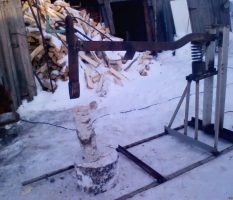
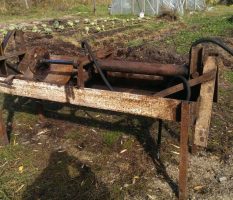
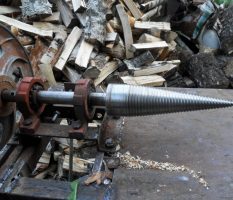
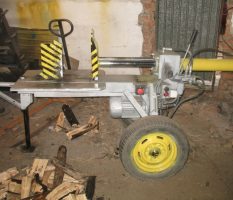
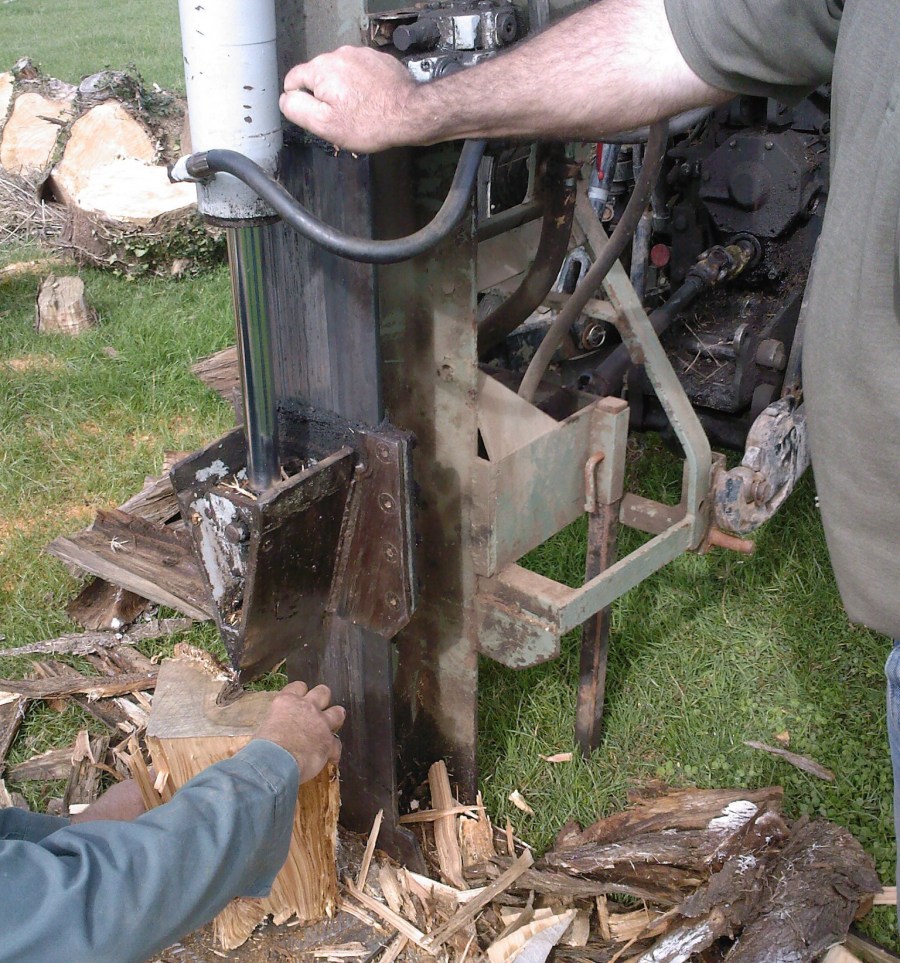
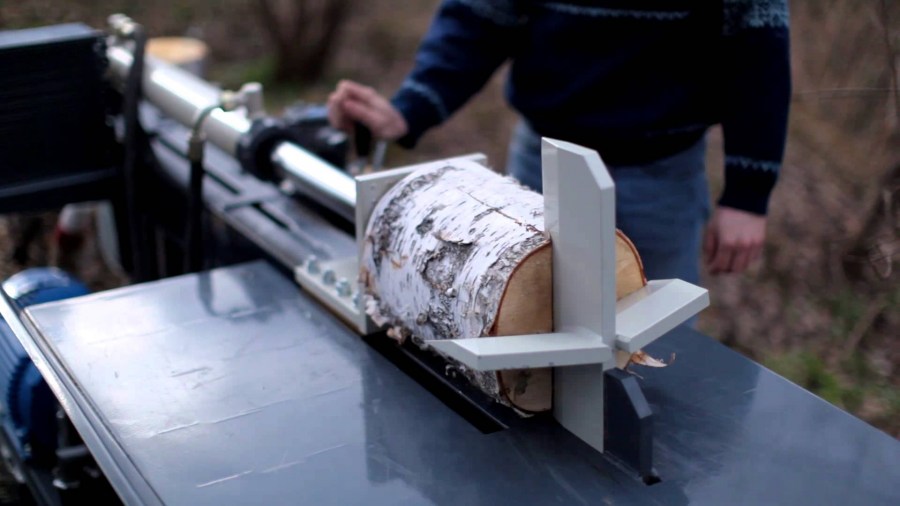
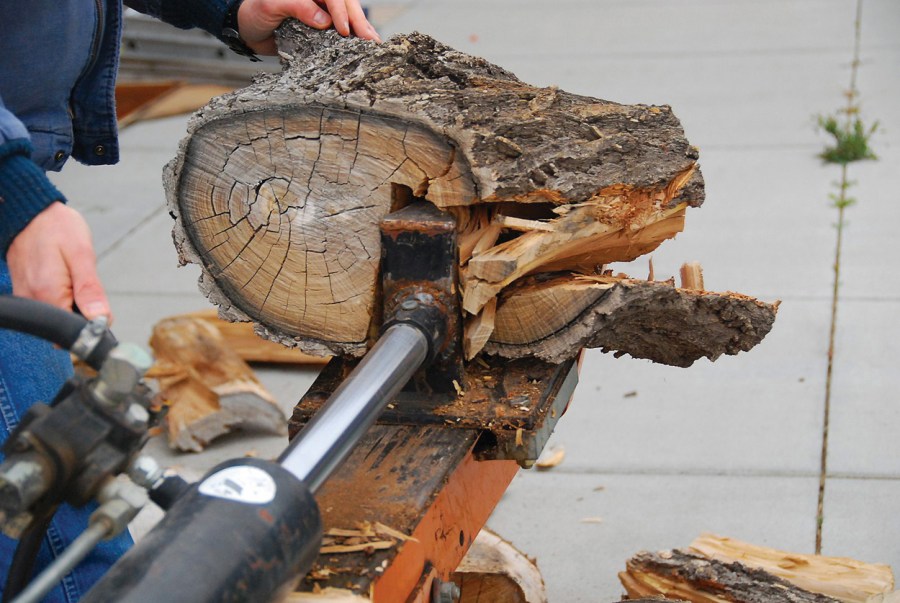
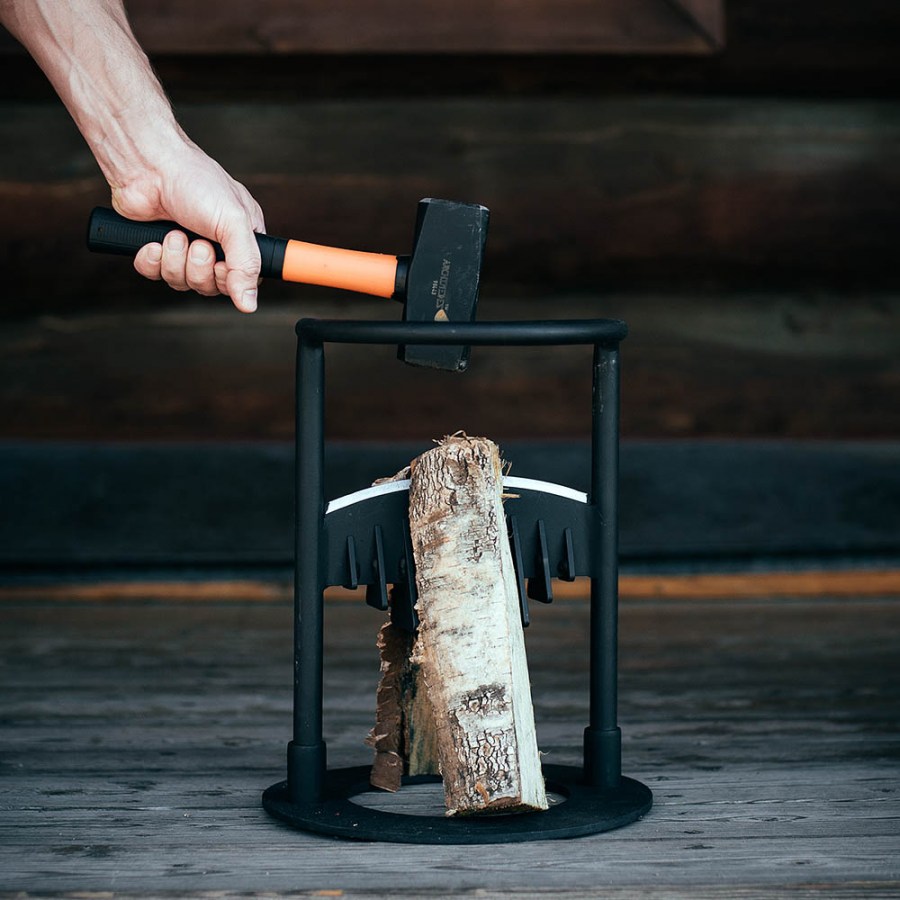
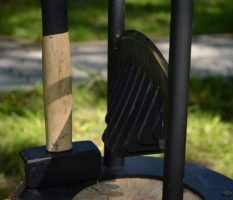
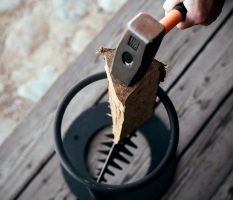
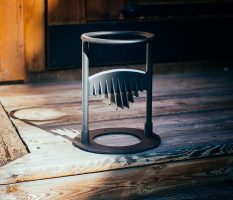
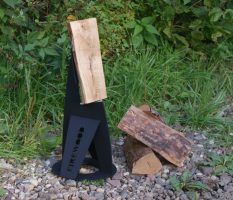
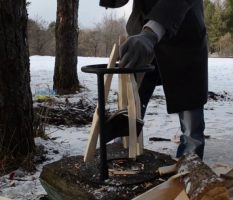



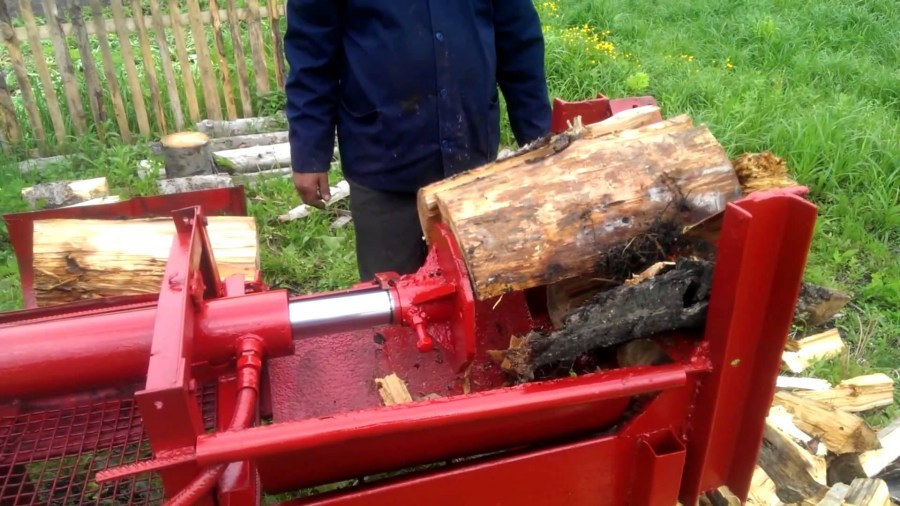
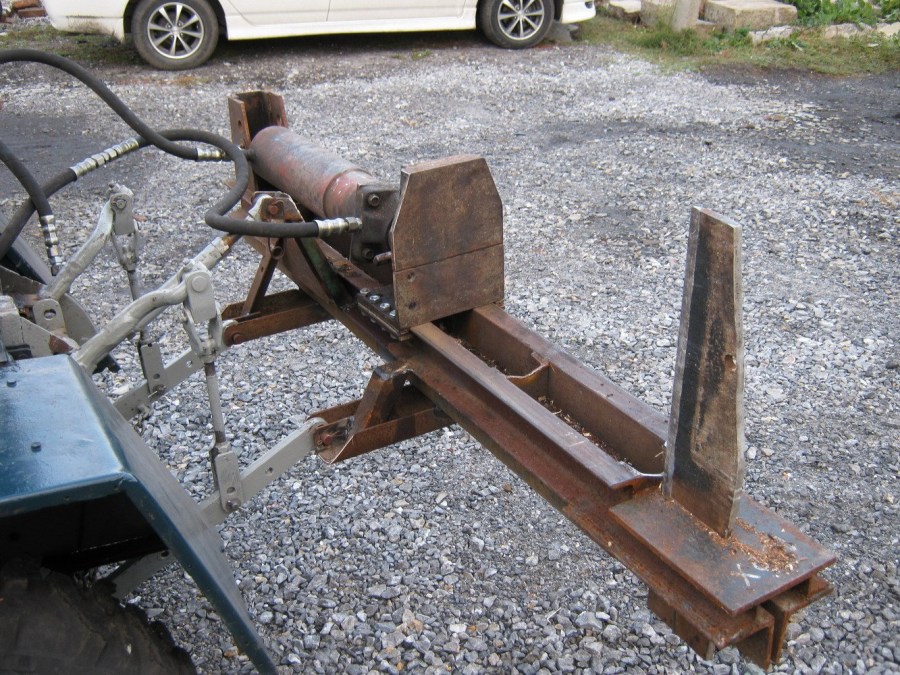
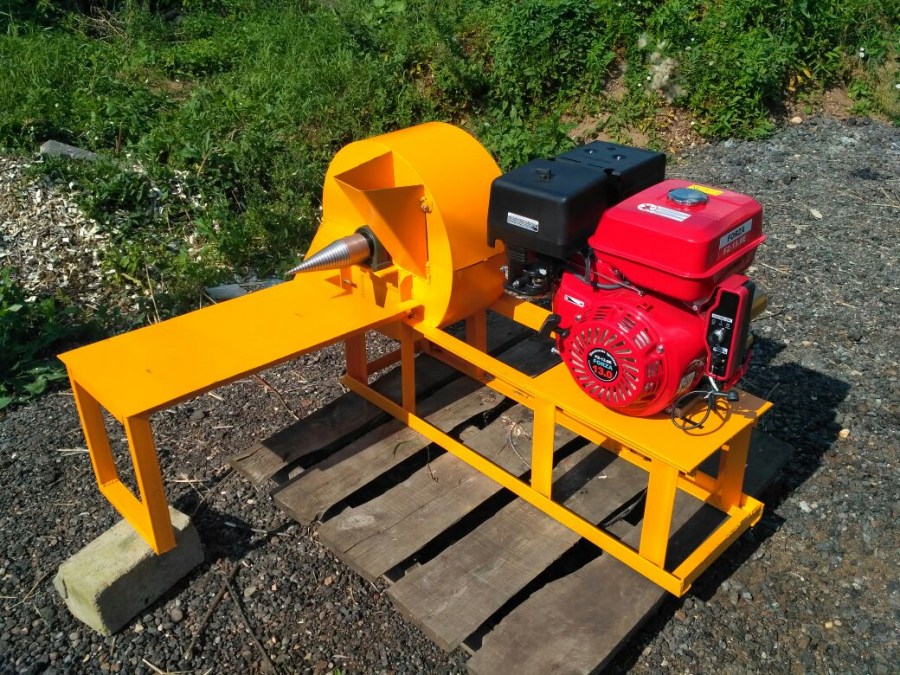
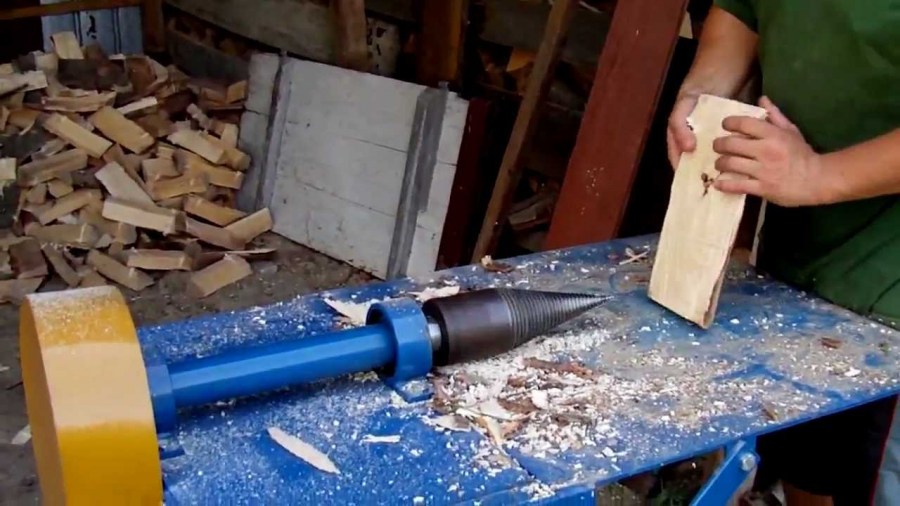


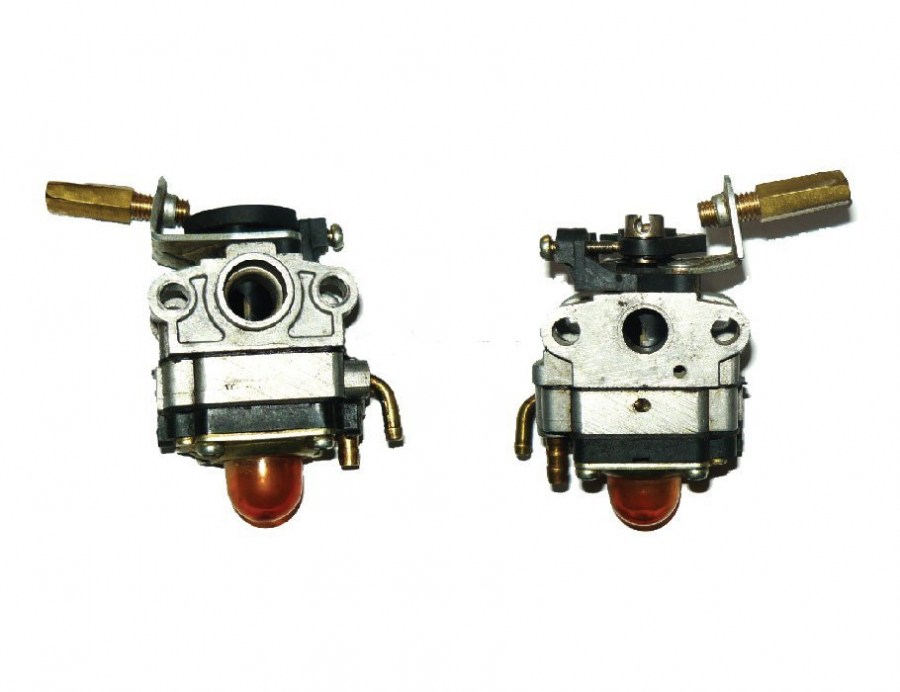
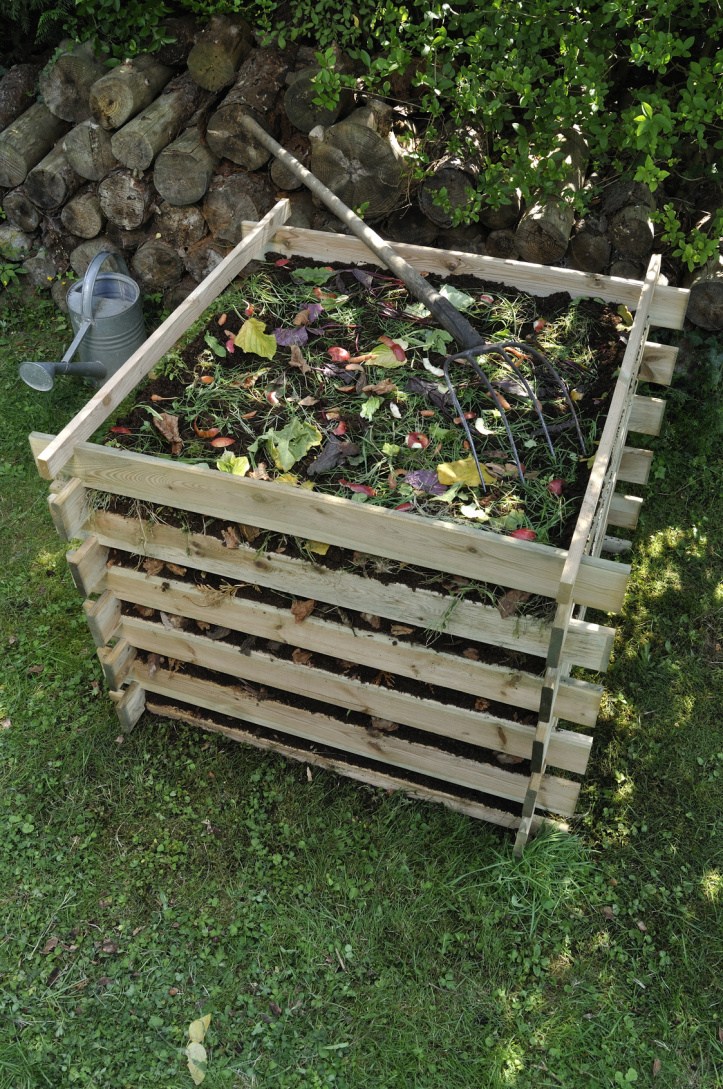
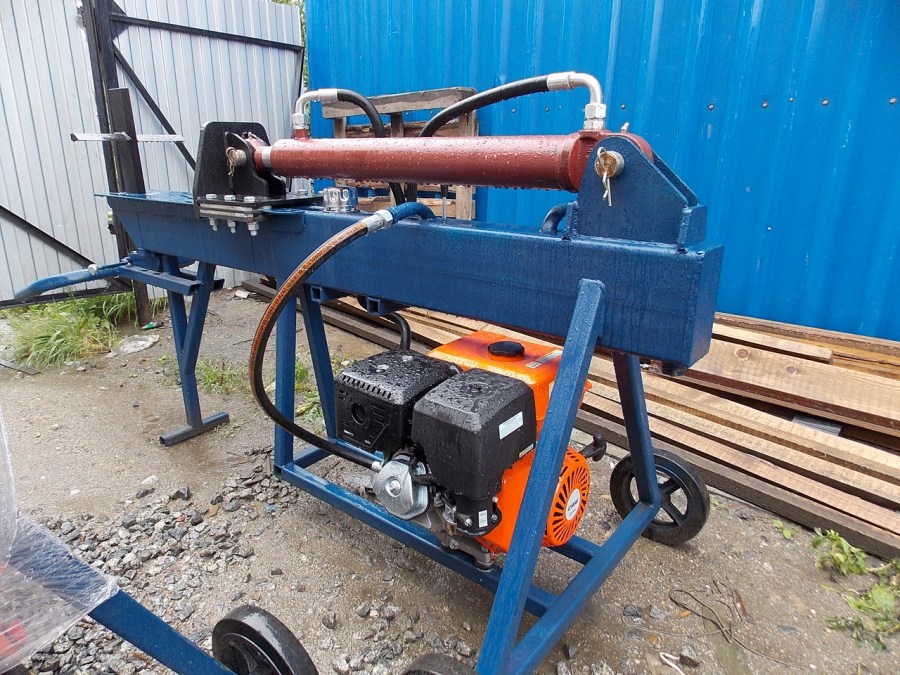
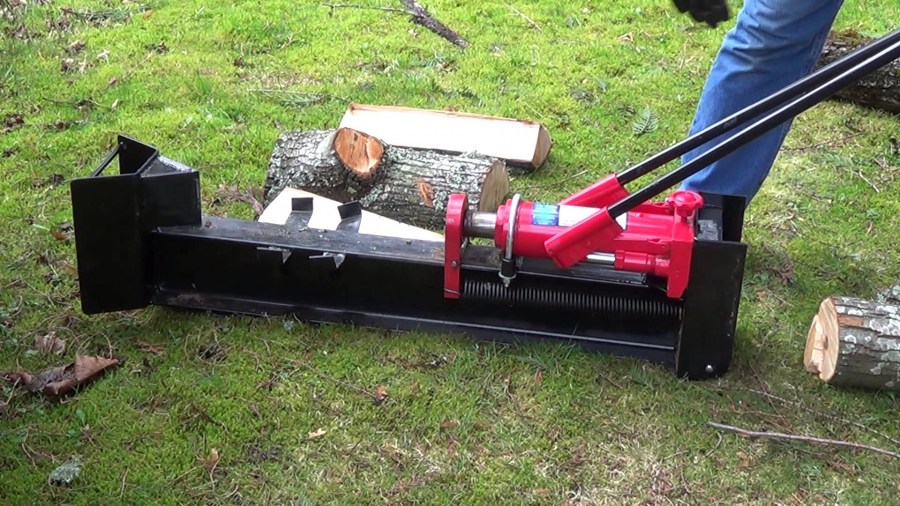
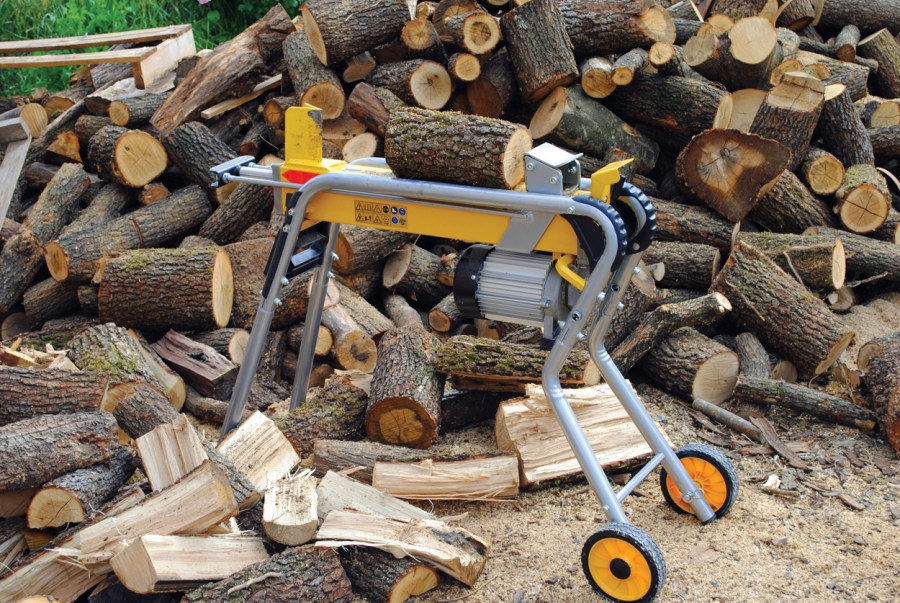
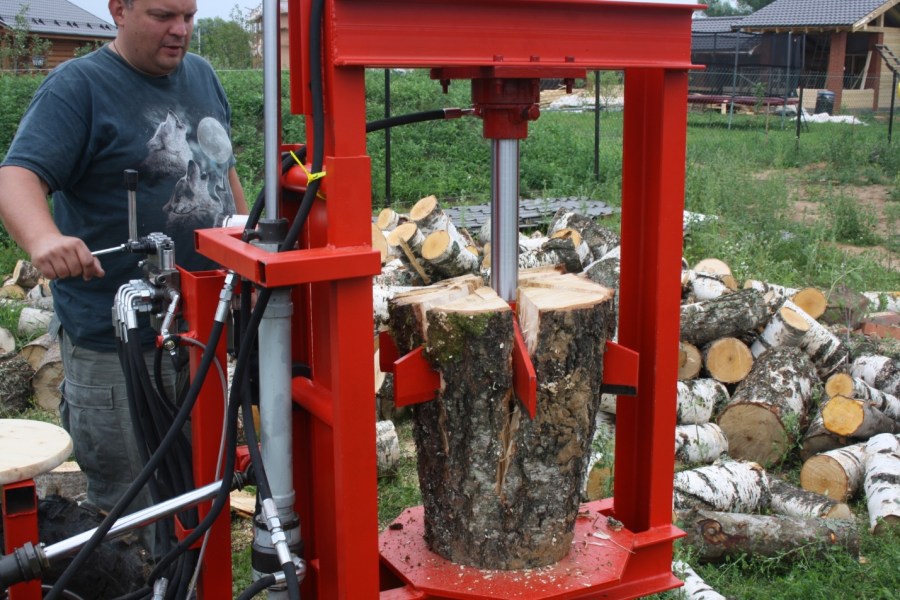

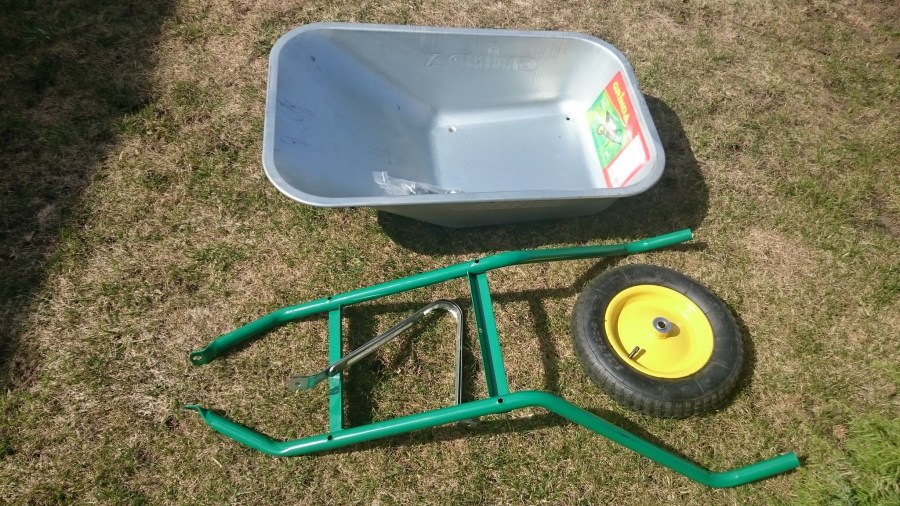
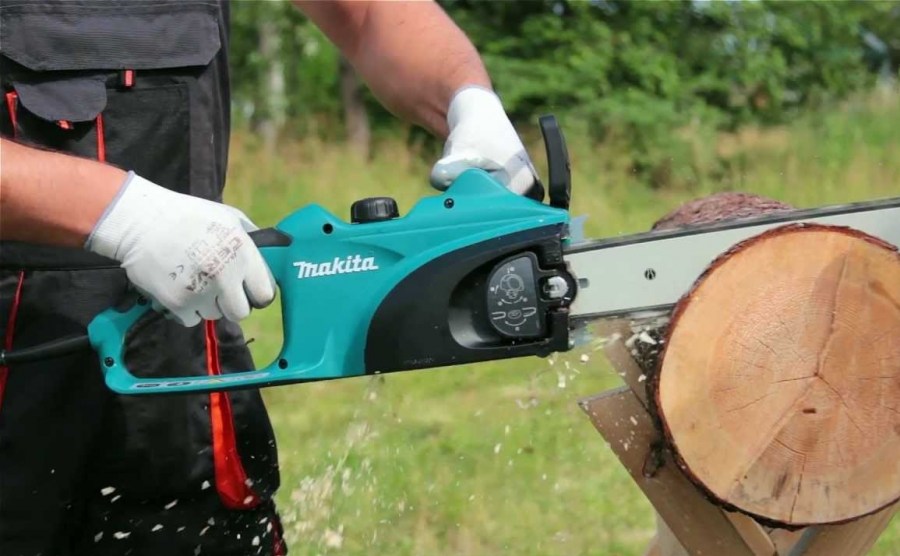
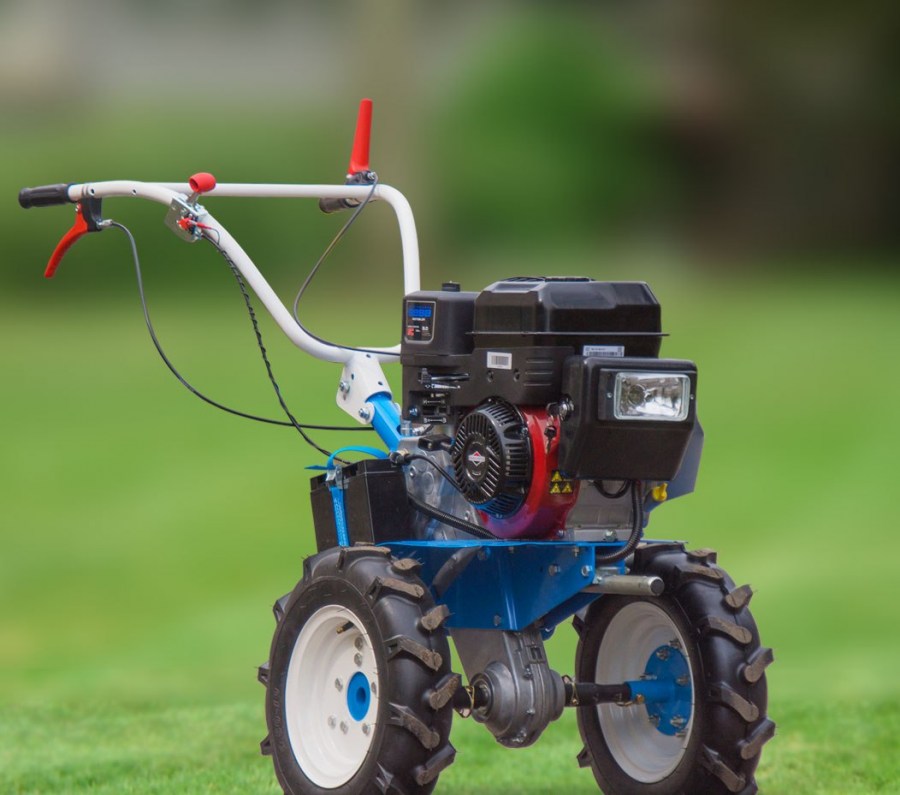
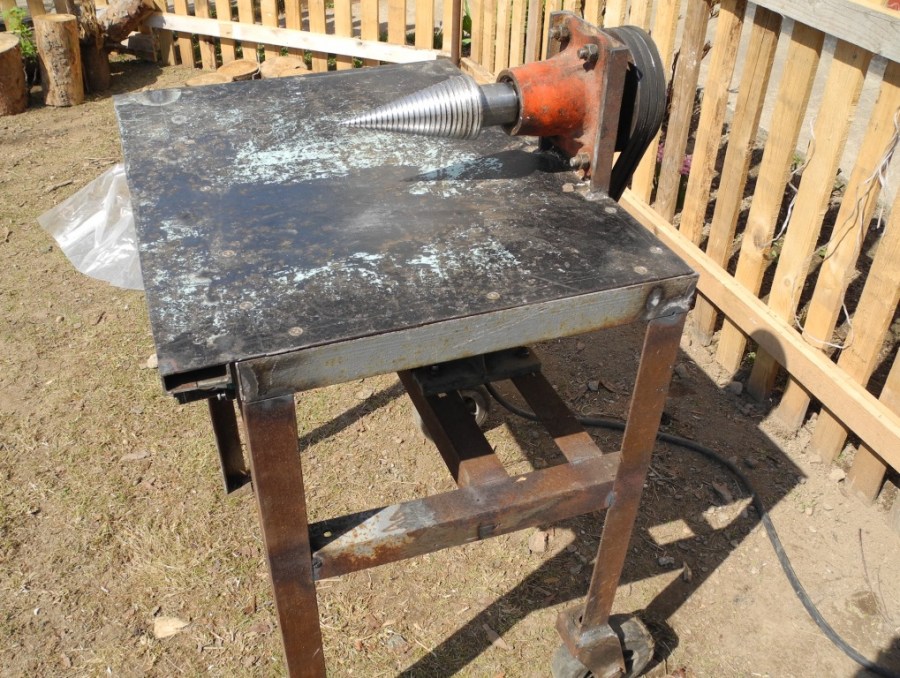
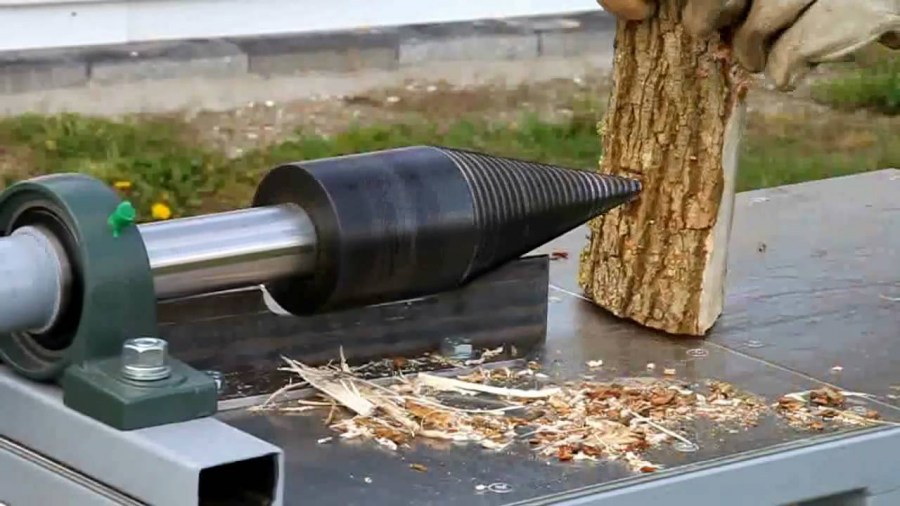
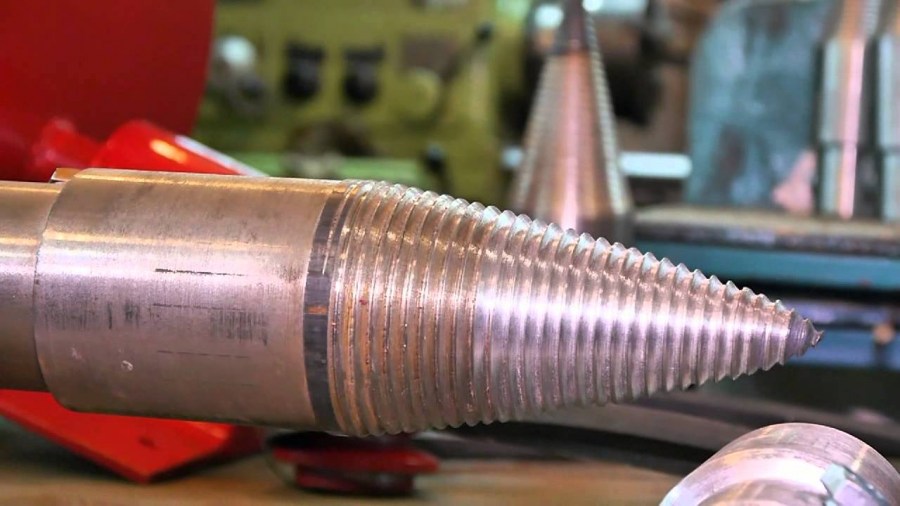

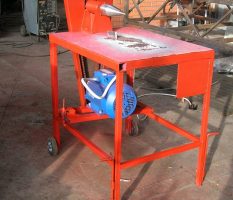

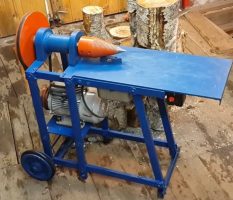
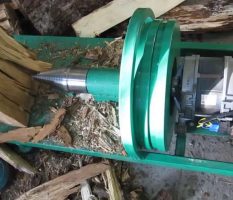
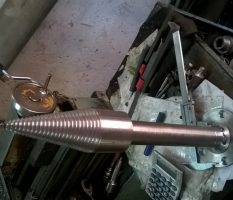
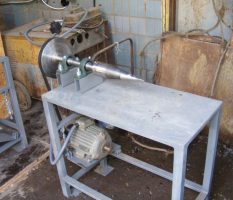


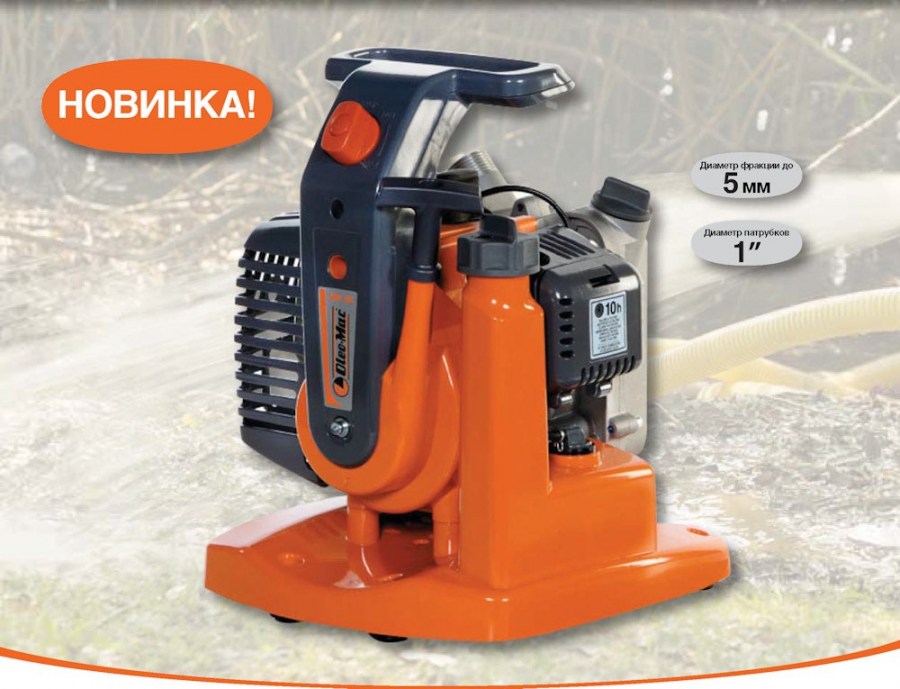
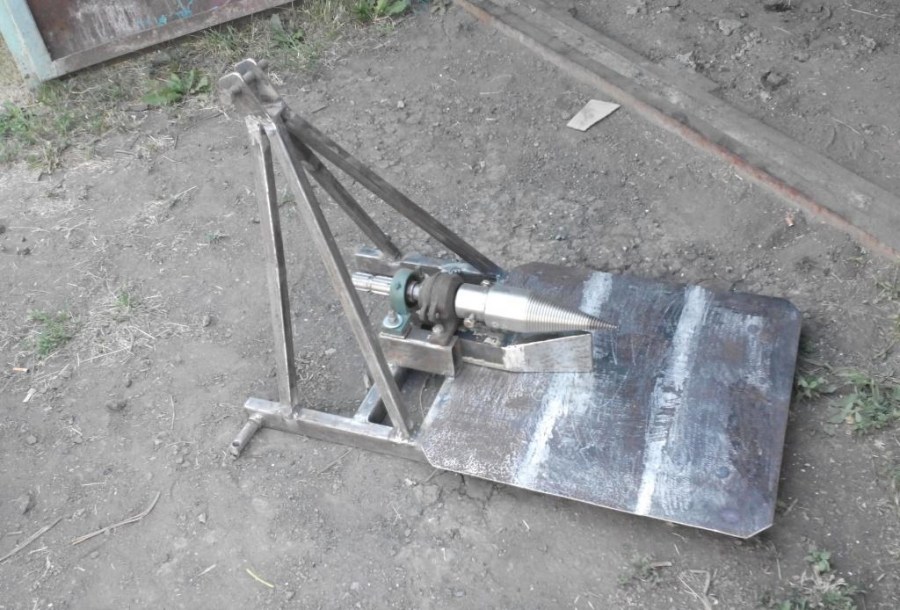
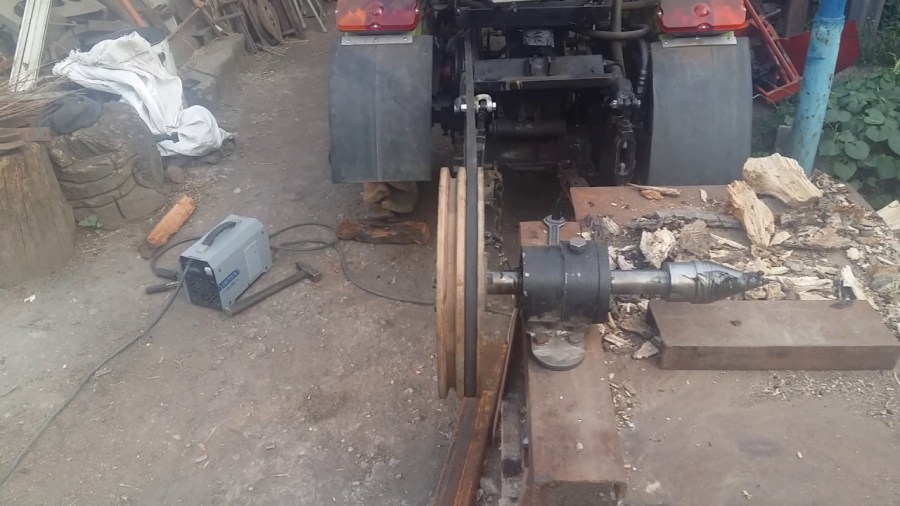

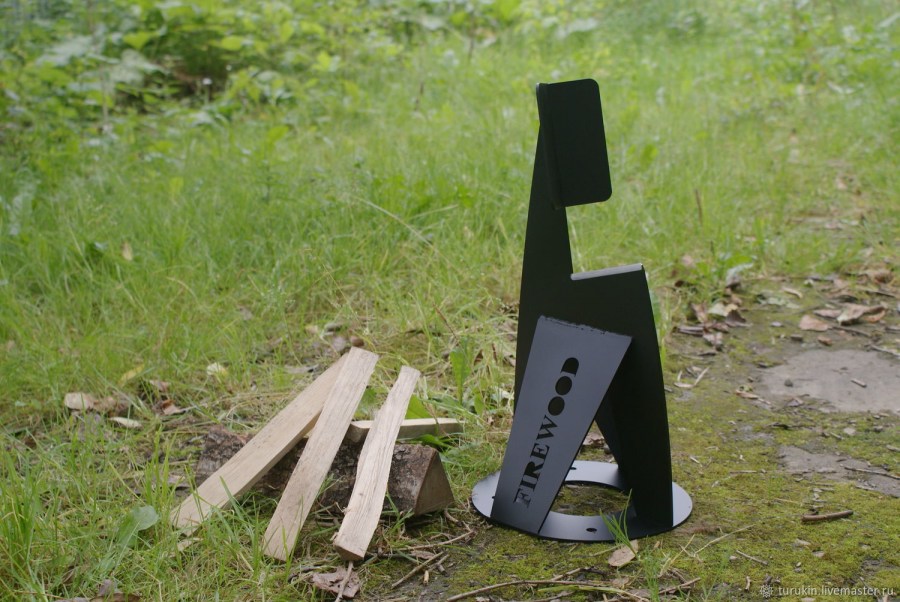
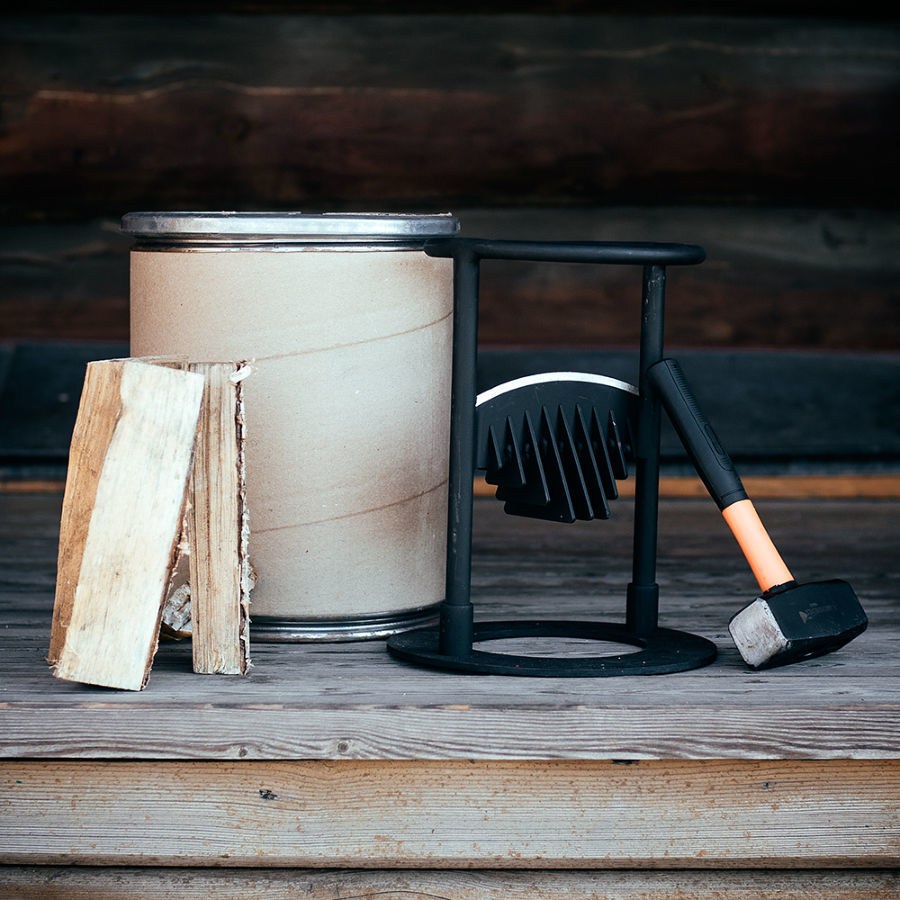
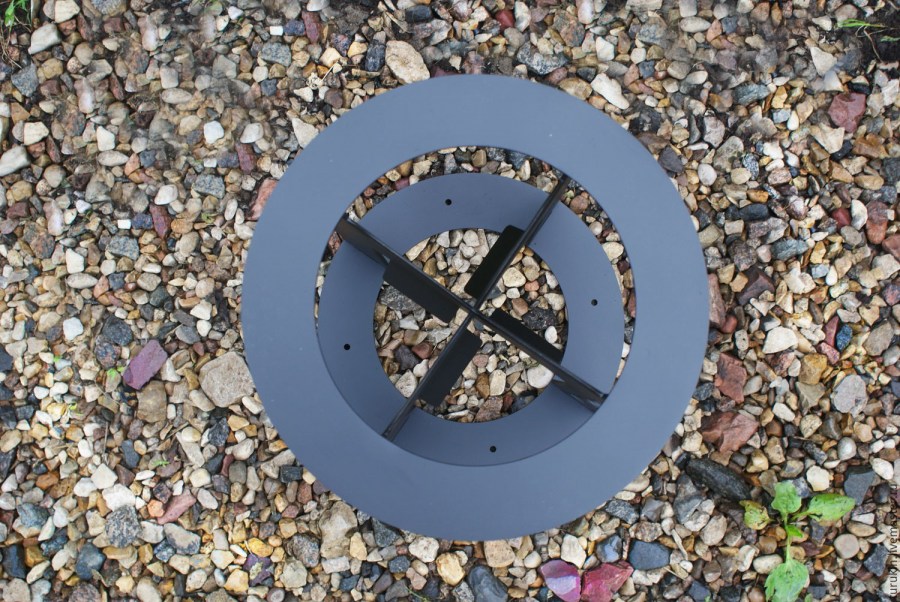
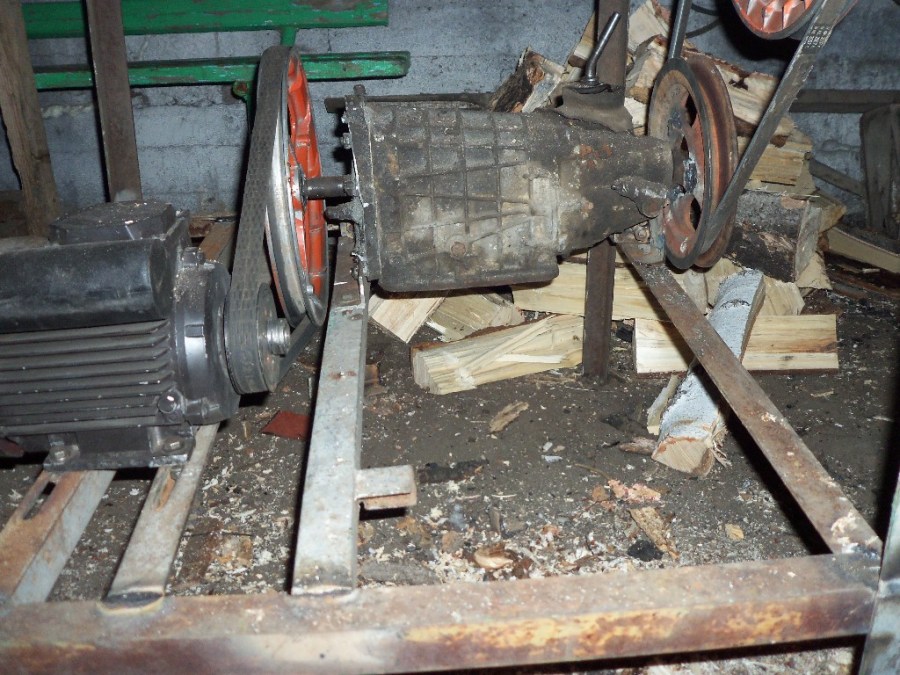
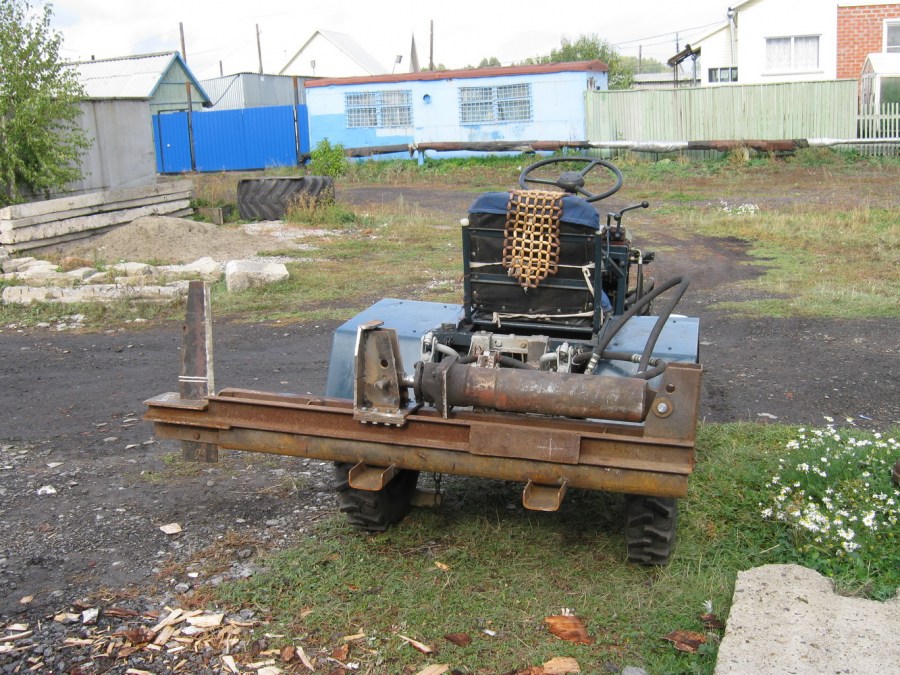
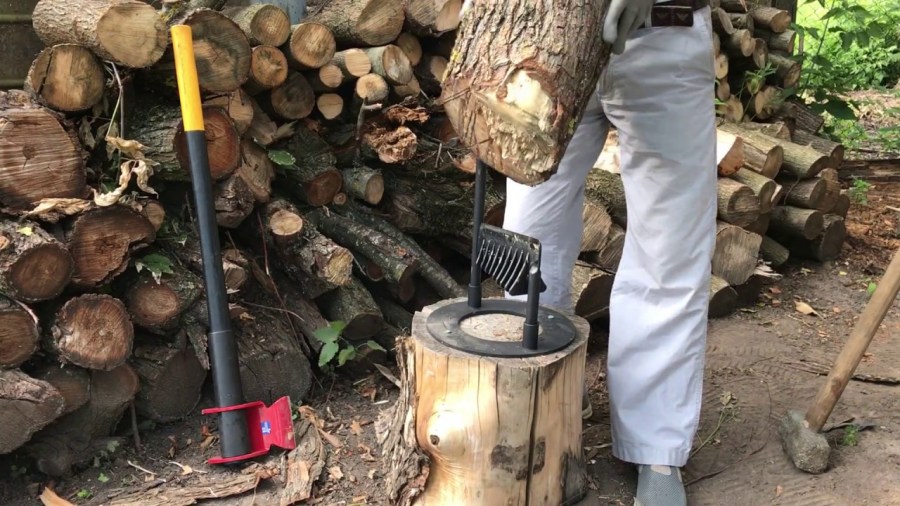

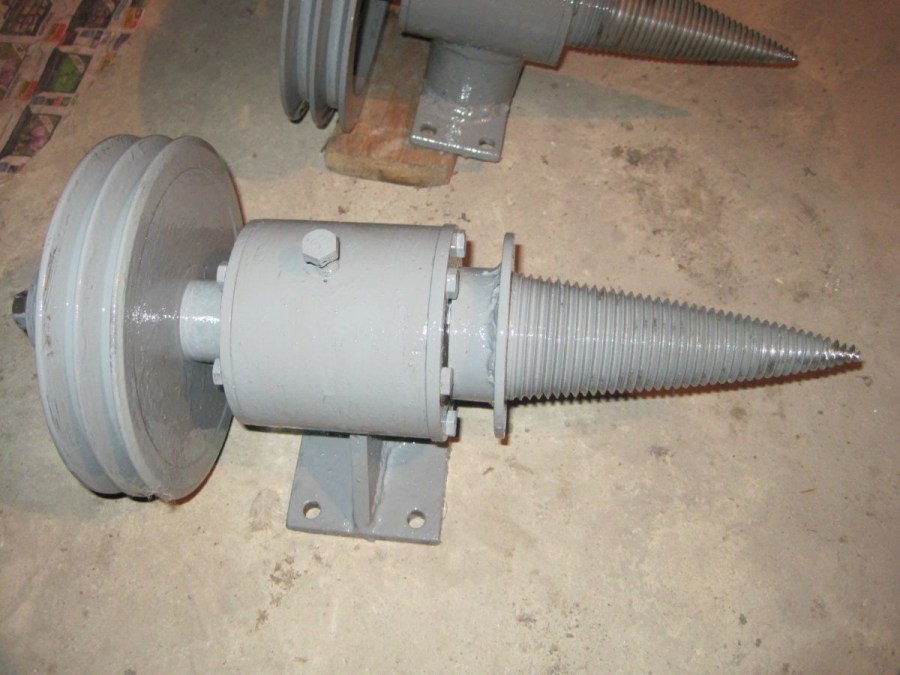
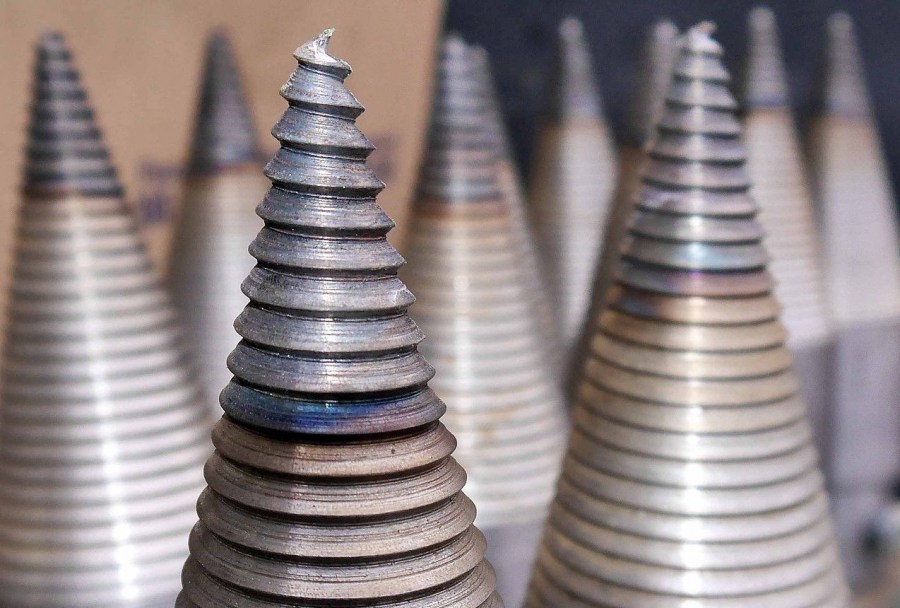
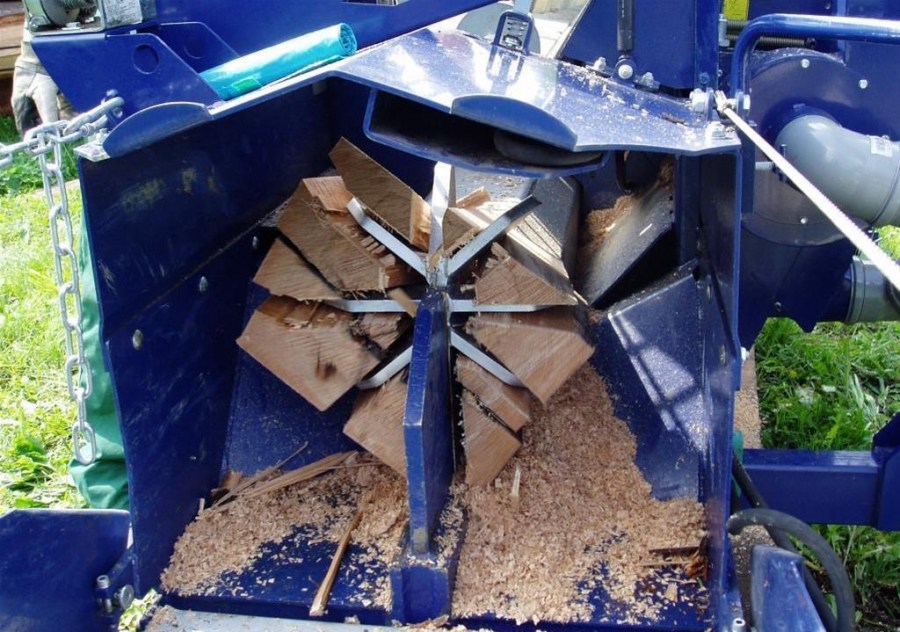
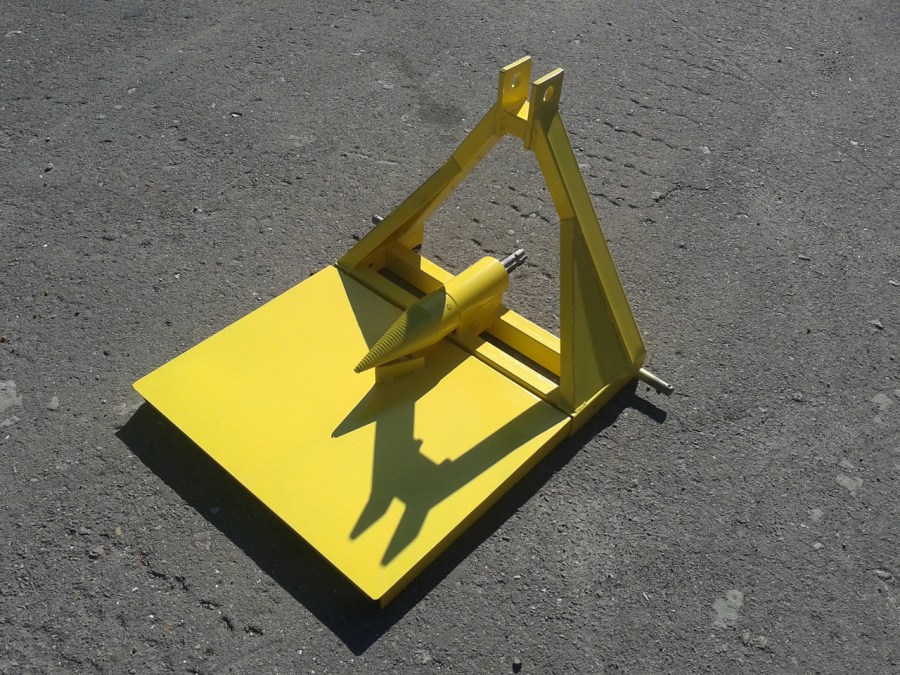
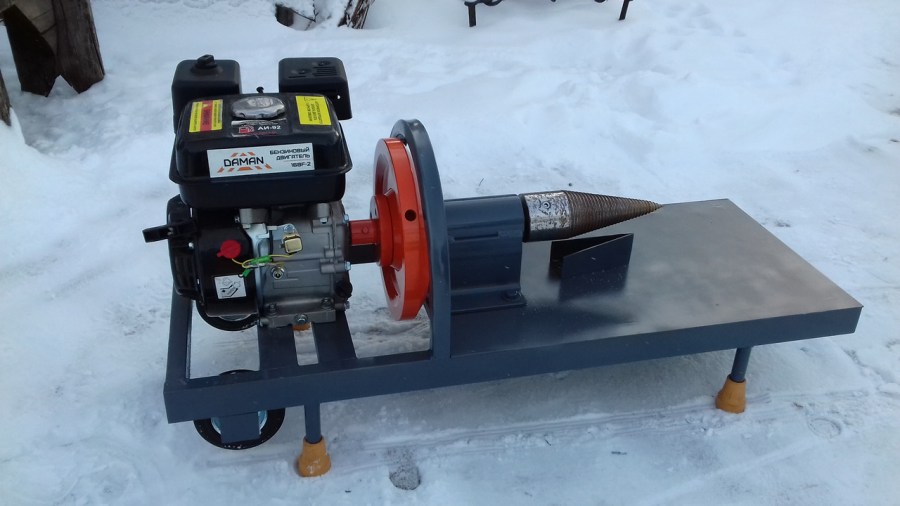
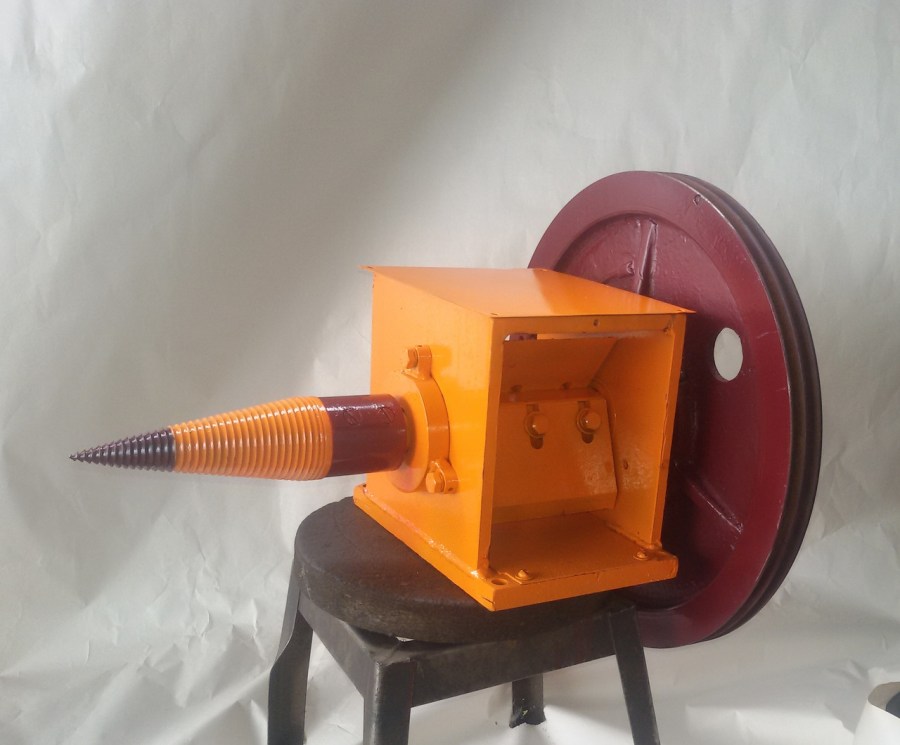
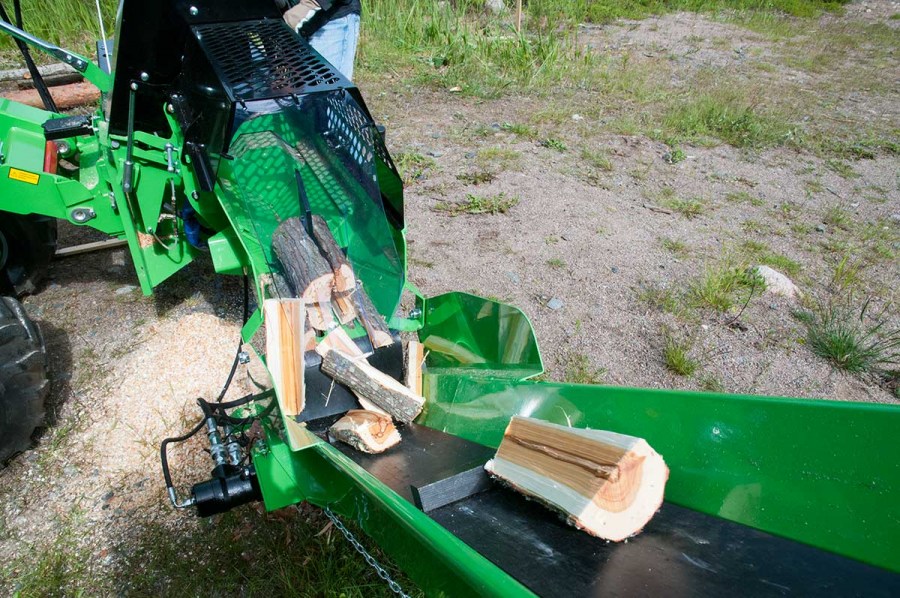
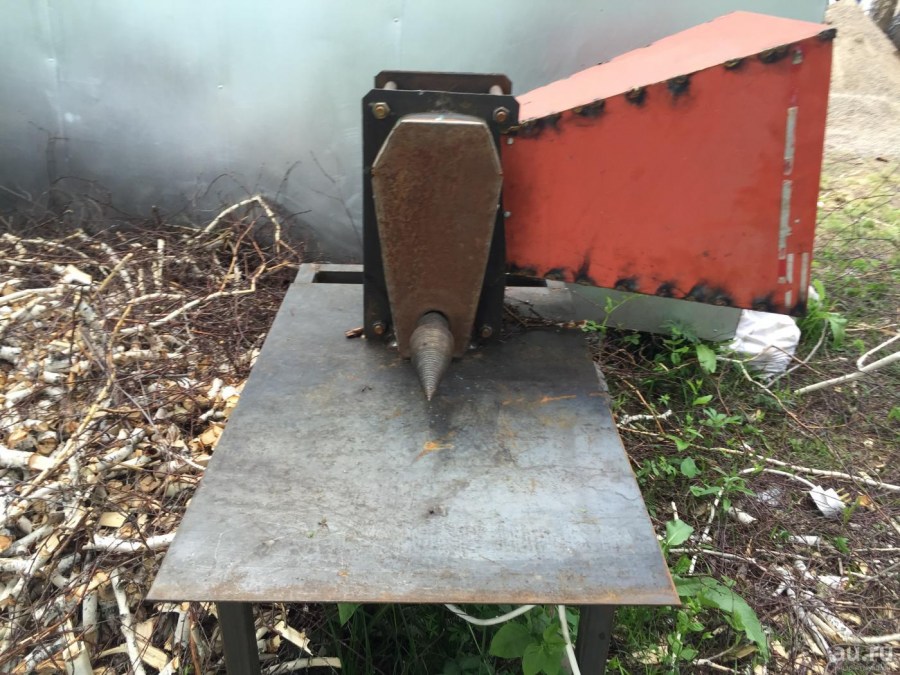
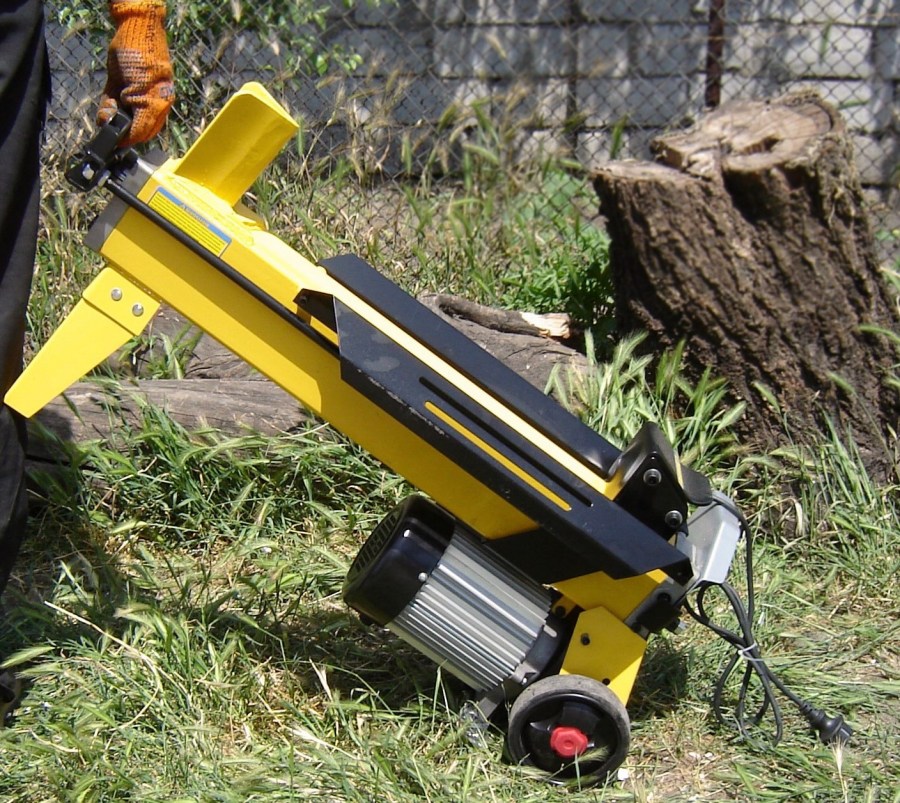

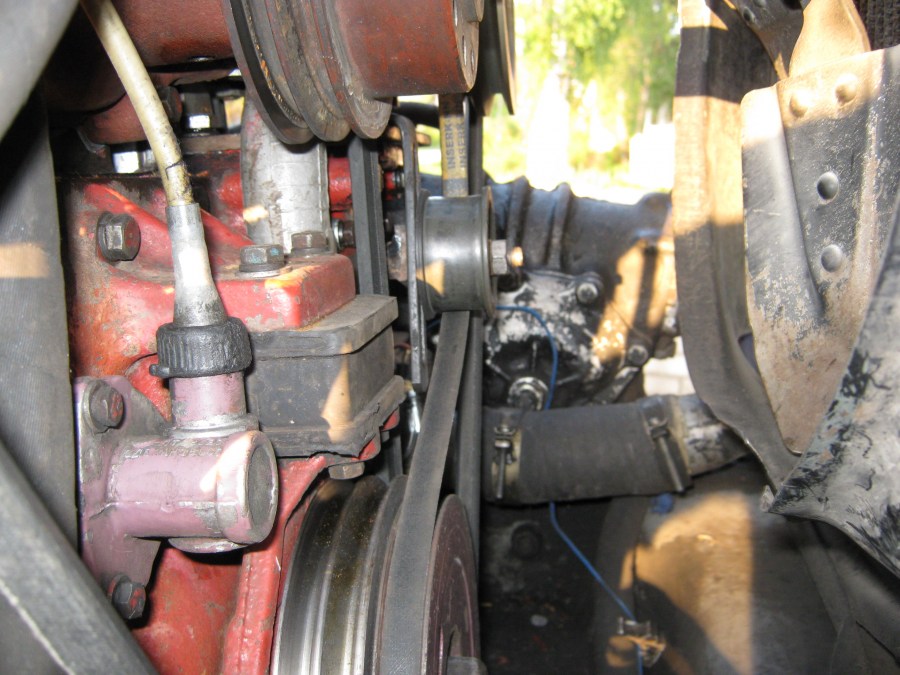

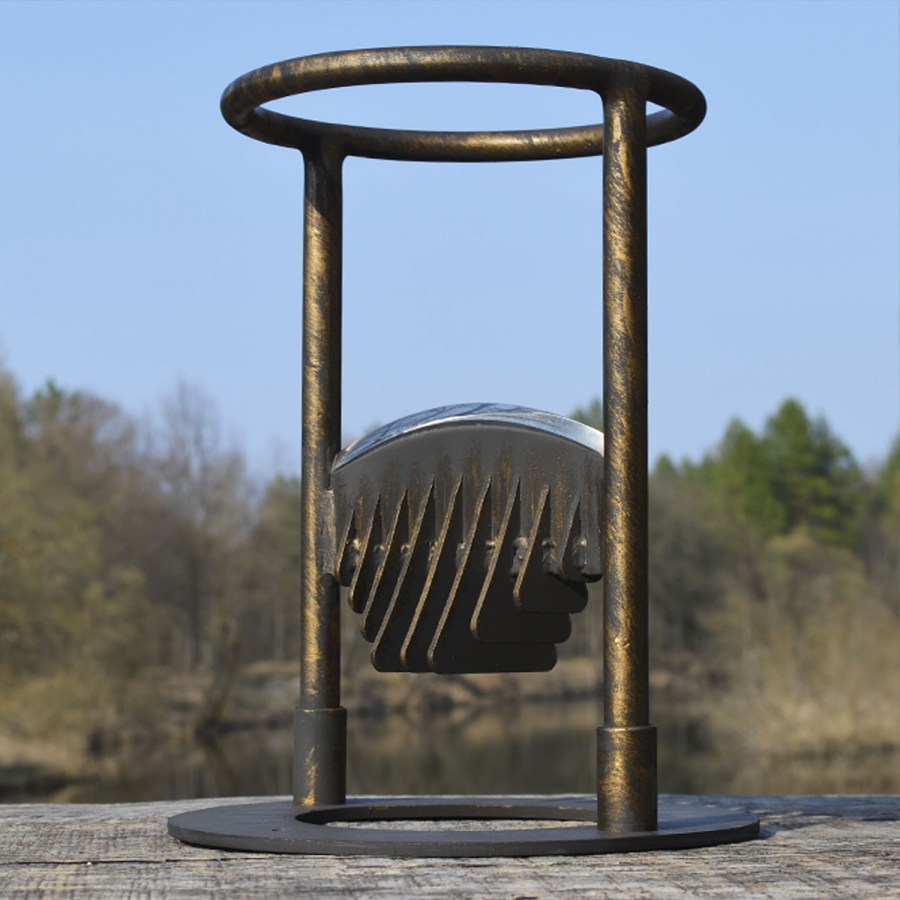


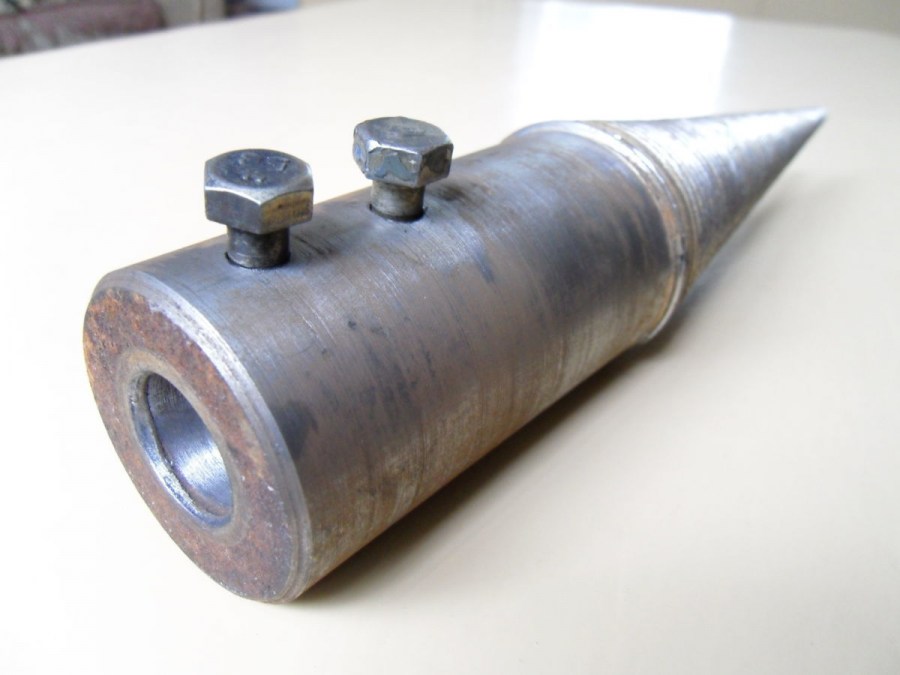

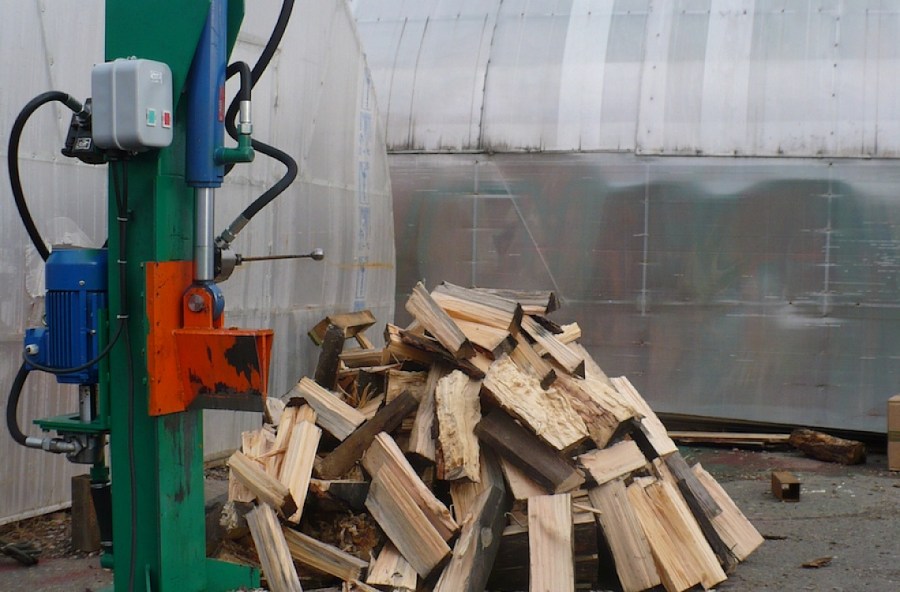
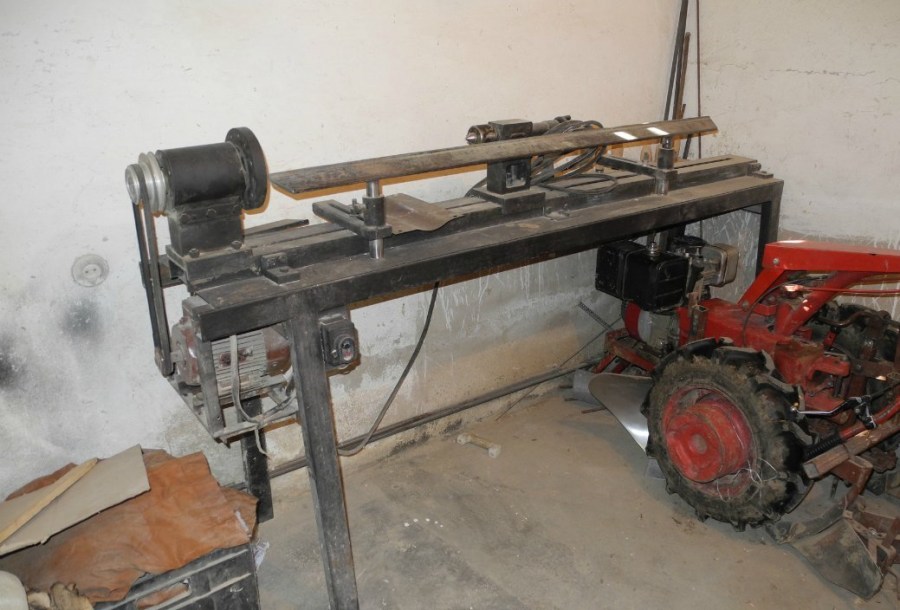

My brother lives in the village, so it used to take a lot of time to prepare firewood. And last summer, they and a friend made a “carrot” wood splitter themselves, and thereby greatly facilitated their work. To create this device costs were minimal, and it brings tangible benefits. And when there was no wood splitter, then the brother got the strongest logs in the frost a strong stab, in such weather they are always much more pliable.